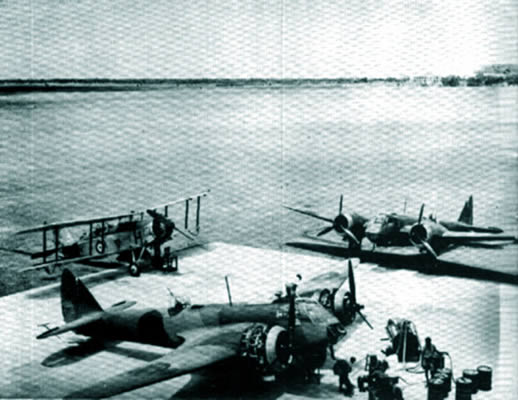Pilots and maintenance crews in front of one of ARR's Bristol Blenheim I
|
|
|
|
|
|
|
|
|
|
|
|
|
|
|
|
|
|
The Bristol Blenheim I bomber / long-range reconnaissance aircraft
|
|
|
Pilots and maintenance crews in front of one of ARR's Bristol Blenheim I |
|
|

A couple of ARR's Bristol Blenheim I's photographed at an air show. Spring 1943
Technical data of the Bristol Blenheim I
|
Wingspan
|
17.18 meters
|
|
Length
|
12.18 meters
|
|
Height
|
3 meters
|
|
Weight (empty)
|
4000 kg
|
|
Weight (loaded)
|
5334 kg
|
|
Maximum speed at 4000 meters
|
447 km/h
|
|
Maximum operational ceiling
|
7500 meters
|
|
Range
|
1690 km
|
|
Engine
|
Two Bristol Mercury VIII rated at 840HP
|
|
Armament
|
Two Vickers 7.7 machine guns
|
|
Payload
|
Up to 500 kg
|
|
Crew
|
4
|
|
Numbers received
|
37
|
|
Serial numbers
|
1-37
|